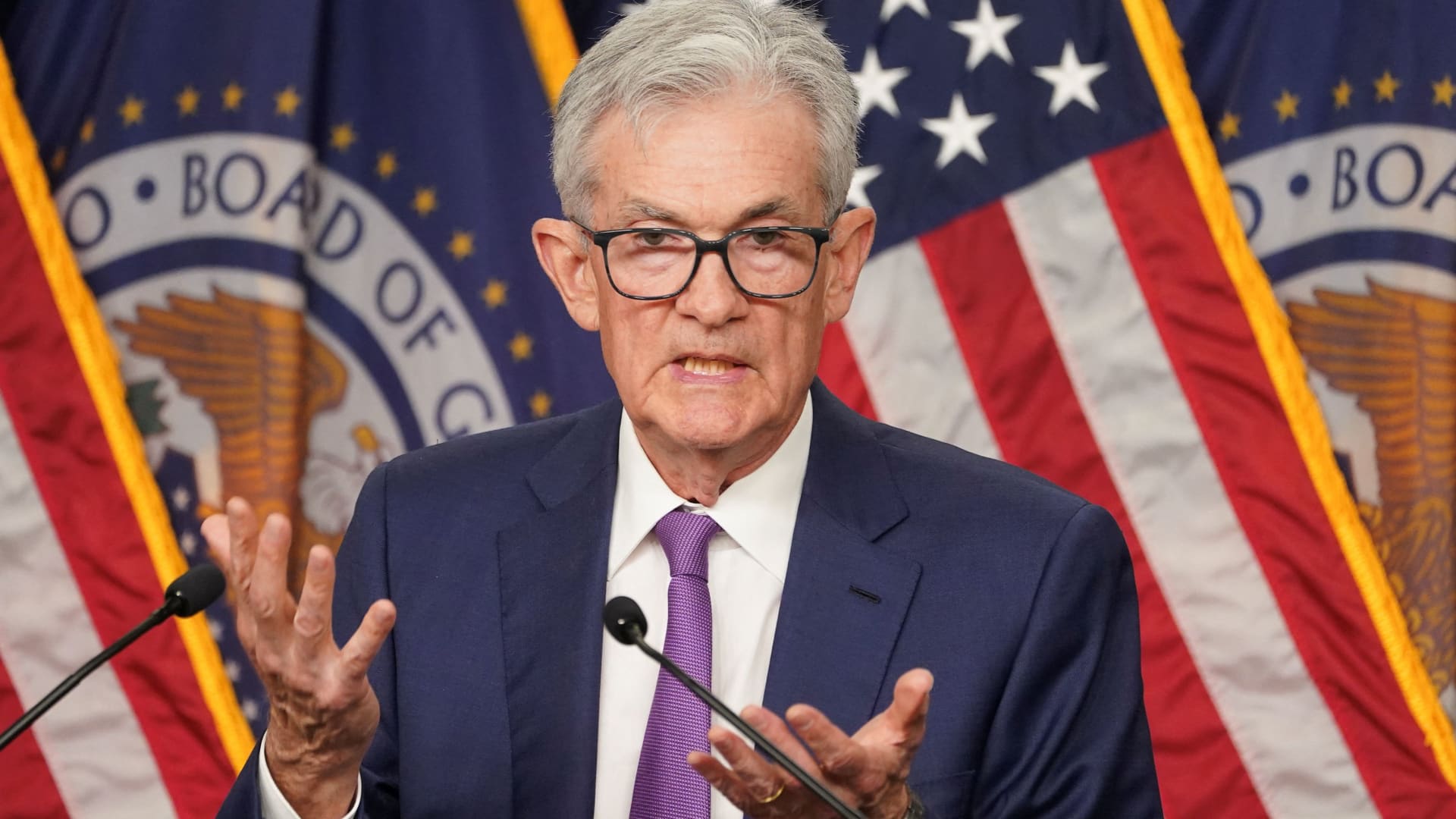Wall Street is confused and divided over how many times the Fed will cut rates this year

Wall Street reacted Thursday to this week’s Fed meeting, with forecasts scattered across a range of outcomes for where monetary policy heads next. Most economists for the biggest forecasting firms expect the central bank to lower benchmark interest rates sometime later this year. But the outlooks ranged from one cut to four, with most saying that only time will really tell how much the rate-setting Federal Open Market Committee can take its foot off the brake. “The May FOMC meeting was mostly uneventful but dovish overall,” Goldman Sachs economist David Mericle said in a client note that underscored the uncertainty following this week’s meeting. “While the Committee added a hawkish acknowledgment of the ‘lack of further progress’ on inflation so far this year to its statement, Chair Powell offered a dovish message in his press conference.” The result of the conflicting signals? Goldman left in place its call for two rate cuts this year of a quarter percentage point each, with one in July and the other in November. However, the firm noted that “even moderate upside surprises” on inflation could thwart that outlook and “delay cuts further.” Indeed, there was considerable uncertainty on the Street over the extent and timing of cuts. Futures market traders on Thursday continued to price in the likelihood of just one reduction this year and even about a 15% chance of a hike, according to CME Group data . Here’s a quick look at where the major firms lined up: Citigroup is an outlier in how many cuts it sees coming, though its reasoning for easier policy ahead doesn’t differ that sharply from other firms. Essentially, most economists believe the Fed is correct that inflation metrics will show more easing through the year and get the central bank closer to its 2% annual goal. The issue is how much convincing that cautious policymakers will need and how quickly they’re willing to make a move without showing that they are vacillating on their commitment to stable prices. “Powell’s comments were consistent with our view that the Fed will proceed to lower rates as soon as either core inflation data softens or labor market data weakens,” Citigroup economist Andrew Hollenhorst wrote. Lower inflation numbers along with “a sharper deterioration” in the jobs outlook will lead the Fed to start cutting in July and keep going until it has lowered its fed funds benchmark by a full percentage point before the end of the year, he added. At Morgan Stanley, the firm’s chief U.S. economist, Ellen Zentner, was nearly as certain about rate cuts to start in July, though the inflation trends so far in 2024 “have narrowed the path to get there.” “Despite the lack of further progress in slack this year (in terms of both inflation and the labor market), the Committee has made meaningful progress toward its 2% goal over the past year,” she wrote. “We continue to see inflation moving lower, unemployment higher, and three cuts this year.” As for more consensus calls, Barclays thinks a September cut “at the soonest” with the prospects very much alive that the Fed will choose a harder line if the first-quarter inflation data is a harbinger of things to come. Marc Giannoni, chief U.S. economist at Barclays, noted that Powell, while indicating a hike is likely not in the cards , also did not repeat his recently stated expectations that rates would be lowered sometime this year. “If inflation comes in stronger than in our baseline, we would expect the first rate cut to be postponed to December,” he wrote. “We view this as almost as likely as our baseline scenario. For 2025, we continue to expect four rate cuts.” And Bank of America said the Fed is likely to stay on hold while it waits for more convincing evidence on inflation. “The Fed has shifted to a wait-and-see mode and is prepared to keep its policy rate where it is for as long as needed,” BofA economist Michael Gapen said. “Needing more time means later cuts.” — CNBC’s Michael Bloom contributed to this report.









